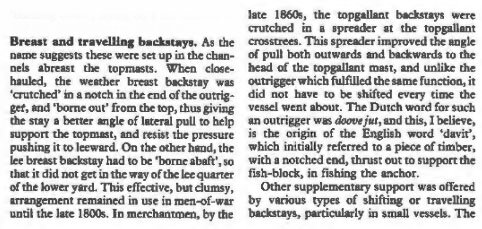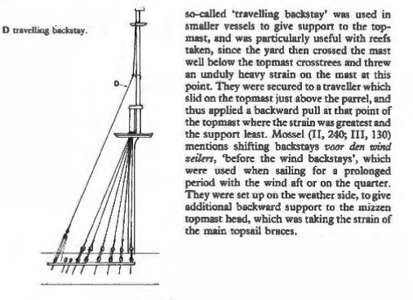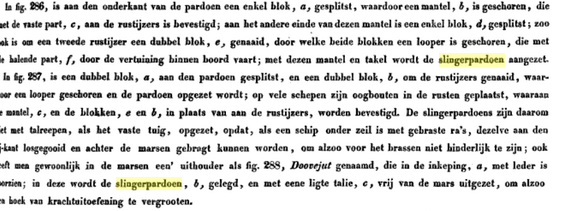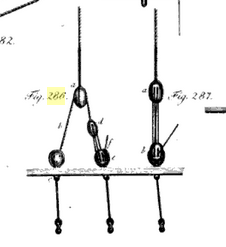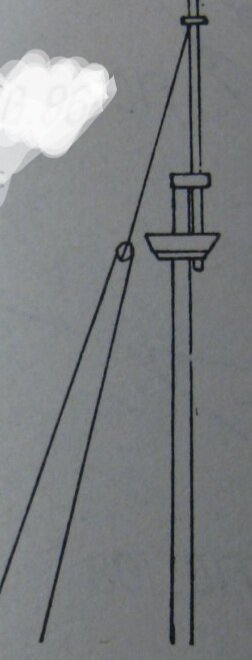What do you think you are on - the 12-4 watch?That last post topic tired me out. ....think I'll take a nap.

 |
As a way to introduce our brass coins to the community, we will raffle off a free coin during the month of August. Follow link ABOVE for instructions for entering. |
 |
What do you think you are on - the 12-4 watch?That last post topic tired me out. ....think I'll take a nap.


Sorry Kirill but your wrong about this. Paul shows this pictureYes, they are... top gallant back stays./ I used same arrangement, but limit them to top mast poz 3-1 on my drwng..
View attachment 306916however F. HOKER told about a little bit different arrangements...phisicaly they should look like another mast tackles, well ... top mast tackles)) which run to the chanels between shrouds...not top gallant backstays...
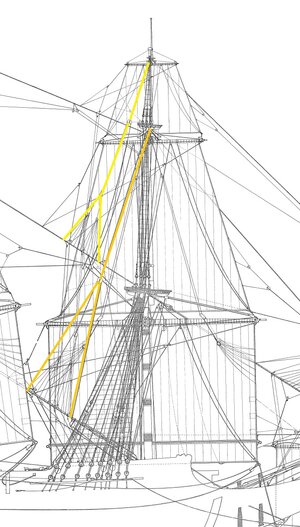

That is because the crowfeet show in the drawing are no backstays but ties and halliardsNo one knows how long the transition to single, central backstays tied to forestays was, when that transition started, or who use the new backstay style before whom.
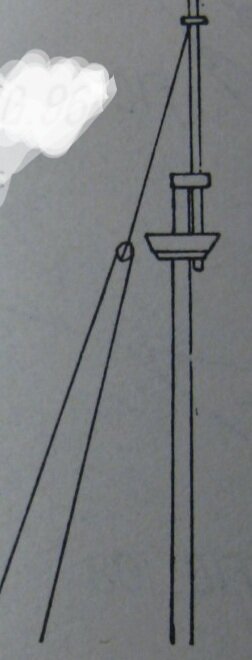
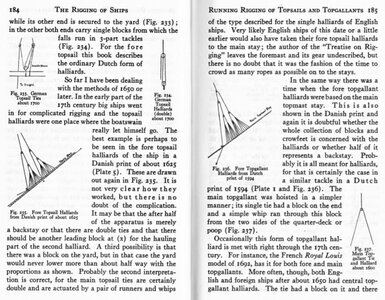
Yes, Kirill, amateur rigging is precisely what I am trying to avoid though at times is seem inevitable!Or...could use them ,if You like some amateur version of rigging very much !!!))
Paul wants to prove he is the ultimate newb of news!!!Yes, Kirill, amateur rigging is precisely what I am trying to avoid though at times is seem inevitable!
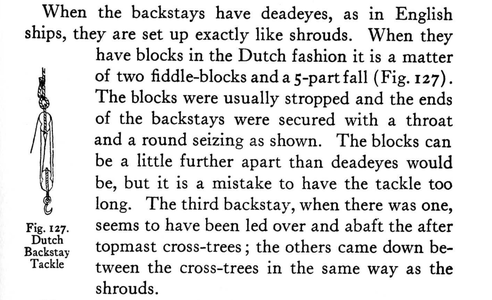

In "A treatise of rigging - W. Salisbury 1620" rewritten by RC Anderson gives there an explanation (it seems) because Peter Kirsch mentioned in his book when he explains the ropes of his rigging plan. He says that a lot of ropes where not mentioned and show in the plan. I gave a screenshot of that part of the book before. Peter Kirsch made this rigging plan with the help of Anderson. That's why in the back there is the "treatise of shipbuilding" of Anderson attached. So I think these two writers make a good source to follow. Salisbury could know, he live in that era. A very difficult subject these backstays, you could leave them away, because there is less proof they existed on the Vasa.HA! I found the source of some of the confusion...
Anderson (p 118): "It is possible that part of the elaborate tackles that run from the topmast heads to the lower stays, in early 17th century prints (Plates 1, 5, 6, 7), is intended for backstays, but personally I prefer to interpret the whole thing as topsail halliards and it will be so described in Chapter IX."
Yes. And you could tie the lead to either the hook or the railing. I don't really know which is more appropriate. It would be best to search for some examples in research sources, if there are any. On La Couronne, I tied them off to kevels on the inner side of the bulwark, because on the Corel model, there were there and appeared to be stronger than the railing. Check your model and photos and see if there are any kevels in the vicinity of the rear end of the channel (where the backstays lead to). If there are, they may have been tied to there. I have my doubts, since kevels are usually used for running rigging such as main and fore course tack lines, which are adjusted frequently to work the sails. The backstays would seldom need adjustment, so wherever they are belayed would be some more semi-permanent fixture, such as the standing part of the lead itself or the hook above the deck eyebolt/ring. I try to use logic like this to solve problems where evidence is scant. If you don't, you choose methods which appear impractical to a sailor or wildly inaccurate. Make your best guess, Paul. What's frustrating is R.C. Anderson is often mute on where leads from tackles are belayed, and this is true in his descriptions of backstays.HA! I found the source of some of the confusion...
Anderson (p 118): "It is possible that part of the elaborate tackles that run from the topmast heads to the lower stays, in early 17th century prints (Plates 1, 5, 6, 7), is intended for backstays, but personally I prefer to interpret the whole thing as topsail halliards and it will be so described in Chapter IX."
So, with that as background for why different people have come to different conclusions and completed their builds in different ways... I think I will run backstays on each side (one or two for the fore and main, one for the mizzen) to the channels. Stephen you showed what I understand to be standing backstays. Kurt you have described what I think are running backstays. Anderson says this:
View attachment 306921
I think I could tie off the lead (the fall) to the hook - would that make sense?
Thank you, everyone, for your help!
Yes. This is an example of how I struggle as a new builder. Understandably, Anderson assumes that anyone using his book as a reference comes loaded with some previous knowledge and experience. He often leaves a line "hanging there" (as do other writers) because we all know what happens next. Which is great unless you don't know what happens next.What's frustrating is R.C. Anderson is often mute on where leads from tackles are belayed, and this is true in his descriptions of backstays.
On the ship I really WAS on the 12-4 watch.What do you think you are on - the 12-4 watch?
You are certainly not alone. It's comforting how many of my guesses are corroborated by your guesses!Yes. This is an example of how I struggle as a new builder. Understandably, Anderson assumes that anyone using his book as a reference comes loaded with some previous knowledge and experience. He often leaves a line "hanging there" (as do other writers) because we all know what happens next. Which is great unless you don't know what happens next.
I have been encouraged by the fact that I am not the only one to struggle to get the details right - and I am grateful for how you and others have been generous with guidance. I may not get everything right - but it won't be for lack of effort.

Got the same problem translating, no problem. But your richt about the halliards in this post.Sorry for my english, I wrote too much in my comments,looks like it happened that my arguments were not clearly given...
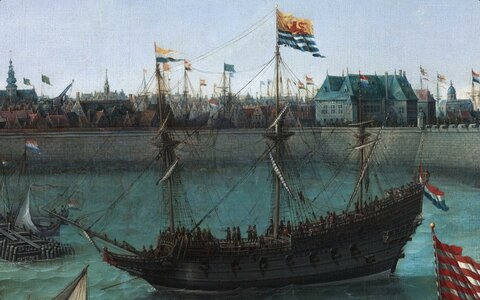
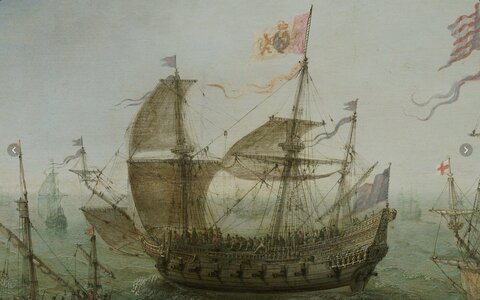
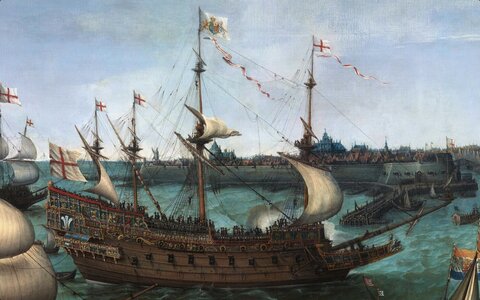
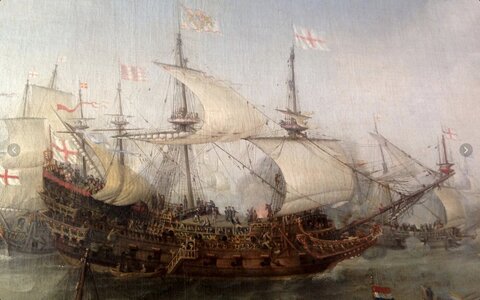
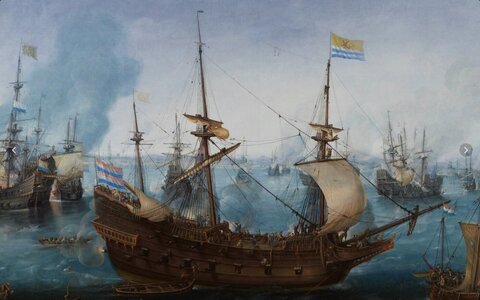
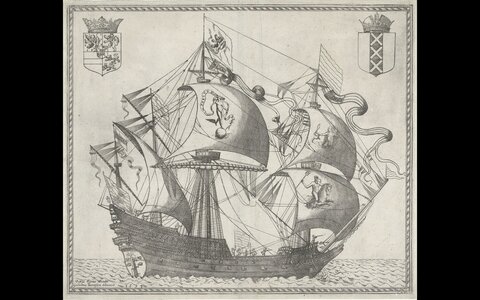
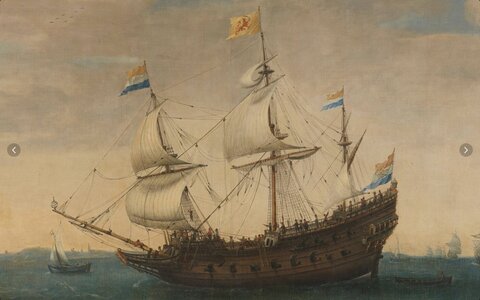
Hello Paul. Oh boy- a massive amount of diverse information for you to sift through. Back to your rigging work- brilliant as always. I’m super glad I’m doing the Victory with zero crows feet...how you got those so right and tensioned is a testament to your work. Cheers GrantHA! I found the source of some of the confusion...
Anderson (p 118): "It is possible that part of the elaborate tackles that run from the topmast heads to the lower stays, in early 17th century prints (Plates 1, 5, 6, 7), is intended for backstays, but personally I prefer to interpret the whole thing as topsail halliards and it will be so described in Chapter IX."
So, with that as background for why different people have come to different conclusions and completed their builds in different ways... I think I will run backstays on each side (one or two for the fore and main, one for the mizzen) to the channels. Stephen you showed what I understand to be standing backstays. Kurt you have described what I think are running backstays. Anderson says this:
View attachment 306921
I think I could tie off the lead (the fall) to the hook - would that make sense?
Thank you, everyone, for your help!

